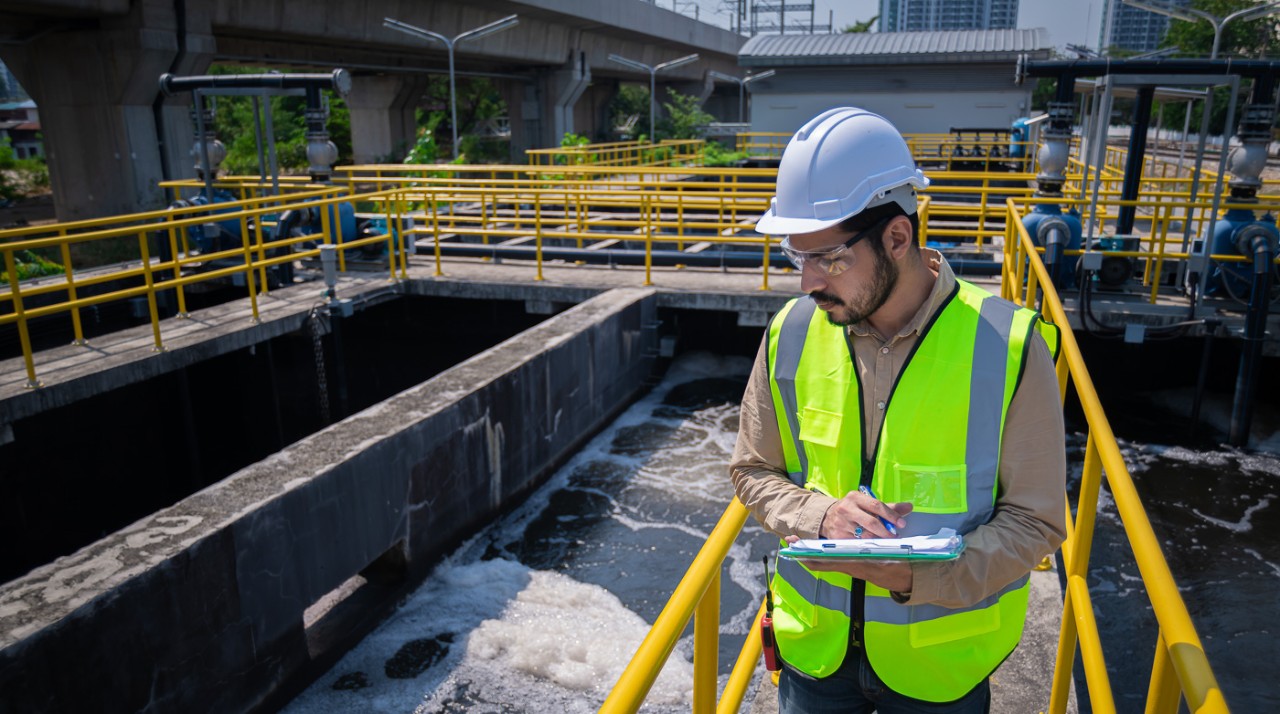
UC joins NSF water initiative to protect Great Lakes
The 10-year project aims to turn research into economic opportunity
The University of Cincinnati joined a new $160 million initiative by the National Science Foundation to protect water quality in the Great Lakes, which provide drinking water to 30 million people.
The NSF announced the creation of 10 regional innovation engines designed to commercialize technology in topics such as artificial intelligence, disaster prevention and biotechnology.
UC will take part in a new water innovation hub made up of other universities and industry to address issues such as removing emerging contaminants from water, recovering resources from wastewater and creating new companies that can take advantage of technological advancements.
The collaborators will work from an initial $15 million grant to develop and kickstart the project over the next two years.
Soryong Ryan Chae, PhD, an associate professor of chemical and environmental engineering in UC’s College of Engineering and Applied Science, said the “innovation engines” are among the largest public investments the NSF has ever made. The Great Lakes engine includes partners from Ohio, Illinois and Wisconsin.
“This is a fantastic opportunity for UC and the state of Ohio. We’re in a great position to address this issue at UC,” he said.

UC is part of a new three-state initiative to protect drinking water in the Great Lakes. Photo/NASA Goddard
Chae and his students have been developing better ways to protect drinking water in his environmental engineering lab at the Mantei Center.
Chae said the group is concerned about removing cyanotoxins, “forever chemicals” called PFAS and excessive nutrients from wastewater to improve water quality.
But the lessons they learn could help safeguard public drinking water nationwide. It’s an ambitious undertaking that addresses a variety of problems relating to pollution, water conservation and economic potential, he said.
“We’re putting all of these puzzles on the table. It’s a next-level approach to addressing a complicated problem to maximize this resource in a sustainable way while providing opportunities for industry,” he said.
We’re looking to attract the next generation of scientists.
Soryong Ryan Chae, UC College of Engineering and Applied Science
Chae conducts experiments in a lab-to-pilot-scale testbed that can isolate variables under controlled but real-world conditions.
“We validate technology in the lab. But the lab can be far from a real-world situation,” he said. “The testbed is a platform we use to control inputs and outputs under the same conditions to prove the cost or performance of particular variables used in water and wastewater treatment.”
The NSF grant is designed to launch new businesses that can turn research discoveries into commercial enterprises.
“Scientists like me are good at coming up with innovation, but there can be a big gap between the lab and the real world,” Chae said. “Industry can help design products based on what we invent. So there’s a needed connection between scientists and industrial partners.”

Associate Professor Soryong Ryan Chae's lab will contribute to a new National Science Foundation initiative surrounding the Great Lakes.
The project will give UC engineering students more research and co-op opportunities in national labs and industry, he said.
“We’re looking to attract the next generation of scientists. So we hope to create internship and co-op placements in the water industry through this project,” Chae said.
UC is uniquely poised to contribute to the national project because of its legacy of working on water-quality issues both locally and around the world, Chae said.
“Environmental engineering at UC has a long history in water,” Chae said. “We have a strong record in working in water recycling, water quality control and resource recovery. We have strong collaborations with the local public utilities and the U.S. Environmental Protection Agency across the street.”
Chae’s longtime research partner, the late UC Professor Dionysios Dionyiou, passed away last year. He was working with Chae on the NSF grant proposal.
“I believe he would be very happy to see this happen,” Chae said.
Chae said he decided to study environmental engineering after seeing a documentary as a child about a rural village that had no clean drinking water.
“It was heartbreaking. A woman made an hourlong walk from her home to collect water from a brown lake shared by livestock,” he said. “The water was contaminated with pathogens. But there was no alternative for them. I decided I wanted to study water to save lives.”
Featured image at top: UC is joining a National Science Foundation initiative to protect drinking water in communities that draw from the Great Lakes. Photo/DSCimage/Unsplash
Impact Lives Here
The University of Cincinnati is leading public urban universities into a new era of innovation and impact. Our faculty, staff and students are saving lives, changing outcomes and bending the future in our city's direction. Next Lives Here.
Related Stories
Conversion process turns pollution into cash
March 17, 2022
Engineers at the University of Cincinnati have developed a promising electrochemical system to convert emissions from chemical and power plants into useful products while addressing climate change.
UC dean says Honda battery plant sets up Ohio economy for succcess
October 11, 2022
UC College of Engineering and Applied Science Dean John Weidner says Honda's plans to build a new $3.5 billion battery manufacturing plant in southwest Ohio will provide welcome opportunities for the state's growing high-tech industry.
UC joins NSF water initiative to protect Great Lakes
February 8, 2024
The University of Cincinnati joined a new $160 million initiative by the National Science Foundation to protect water quality in the Great Lakes, which provide drinking water to 30 million people.
